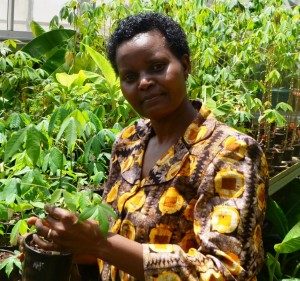The International Service for the Acquisition of Agri-Biotech Applications (ISAAA) has said that, during the last year, African farmers planted a total of 3.5 million hectares of Biotech/GM Crops. This was also during the 20th year of global GM crops commercialisation.

Director of the Afri-Centre of ISAAA, Dr. Margaret Karembu, who presented Africa’s report during the launch of the 2015 Annual Report on Global Commercialisation of Biotech Crops, said that so much was achieved in the continent on biotechnology and biosafety during the year under review.
“For Africa, 2015 was the 18th year of successful commercialisation of biotech crops. The cumulative hectarage from 1998 to 2015 in Africa stood at 3.5 million hectares (Ha). Three countries, Burkina Faso (350,000 Ha), South Africa (2.3 million Ha) and Sudan (120,000 Ha) spearheaded the commercialisation of biotech crops. This production of biotech crops translated to an estimated economic benefit of approximately $2 billion,” Dr. Karembu said.
The exponential growth, according to her, was recorded in spite of severe drought that led to crop failure in many countries of the continent.
“For instance, a devastating drought in South Africa contributed to a 23% decline in hectarage, demonstrating the vulnerability of the continent to climate change. In 2015, South Africa approved the drought tolerant maize trait under WEMA – Water Efficient Maize for Africa project. This timely intervention will go a long way in mitigating the effects of climate change on food security.
“In Burkina Faso, the government in consultation with key players in the cotton industry decided to temporarily scale down the hectarage under insect resistant (Bt) cotton over the next two years. This will allow scientists to address the short-staple length issue observed in current varieties. The short-staple length issues are in no way related to the Bt technology, which continues to offer numerous benefits. By 2014, the farm income gains accrued by Burkinabe farmers amounted to $41 million,” she explained.
Karembu further said that Sudan’s 4th year of Bt cotton growing recorded an impressive 95% adoption rate for which hectarage under Bt cotton soared six-fold from 20,000 ha in 2012 to 120,000 ha in 2015. “Close to 45,000 farmers planted Bt cotton in 2015 compared to the initial 10,000 farmers in 2012 indicating satisfaction with the technology.”
The Director further said that, in the last 18 years, eight countries had conducted and are still conducting trials on crops that would address African challenges. “The research focuses on key food security crops such as banana, cassava, cowpea, sorghum, sweet potato, maize, potato and rice. As a result, Africa could contribute five new biotech crops to the global biotech basket in the coming years.”
In the biosafety regulatory landscape, she said that South Africa was the only country that had Biosafety Law by 1998. “After then, 19 other African countries have developed their biosafety legislation and, in 2015, Africa’s most populous country, Nigeria, enacted its biosafety law in order to tap into the technology’s benefits. In the same year, Kenya’s National Biosafety Authority for the first time, received two applications for open field cultivation of genetically modified maize and cotton,” Karembu said, adding that initiatives to operationalise biosafety laws in other countries as well as the harmonisation of regional biosafety policies were ongoing.
Although during the period 1996 to 2015, biotech maize was successfully grown globally in about 15 countries by millions of farmers on 600 million hectares and benefitting $50 billion of increased revenues, “Except South Africa, farmers in Africa, where the need for improved maize is greatest, suffered a big opportunity cost because they were denied the chance to adopt biotech crops for lack of regulation and support in their respective countries.
“In addition to maize, biotech cotton gave enormous benefit to farmers especially in China and India. In 2014 and 2015, an impressive 95 percent of India’s cotton crop was planted with biotech seed while China’s adoption in 2015 was 96 percent. Between 1997 and 2014, biotech cotton varieties brought an estimated $17.5 billion worth of benefits to Chinese cotton farmers, and they realised $1.3 billion in 2014 alone,” Karembu further said.
She called on African governments to focus on accelerating adoption of those proven technologies that were appropriate in addressing Africa’s unique challenges and reposition itself towards being a global player in development and ownership of emerging technologies.
By Abdallah el-Kurebe
